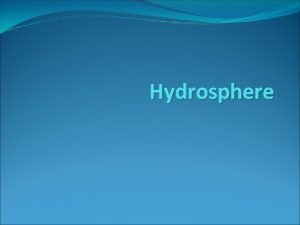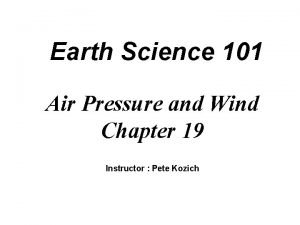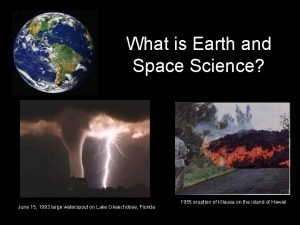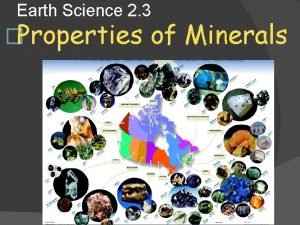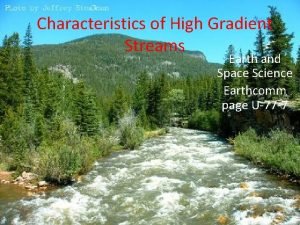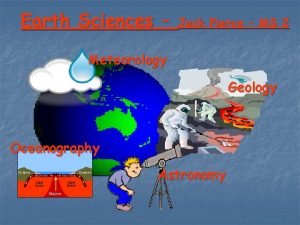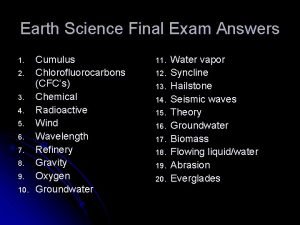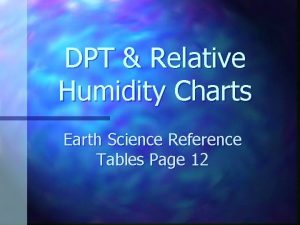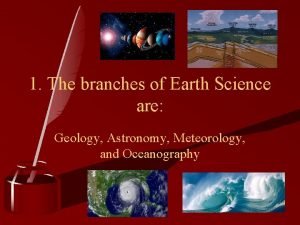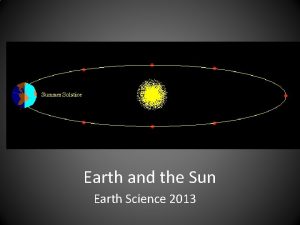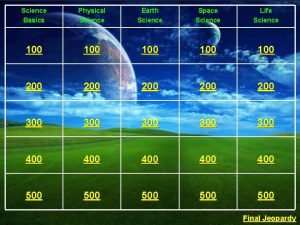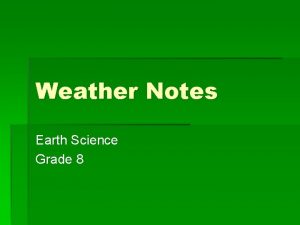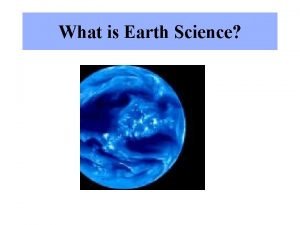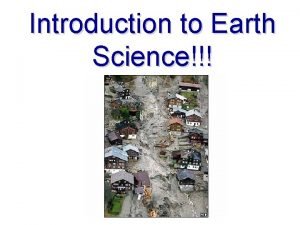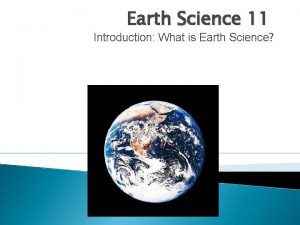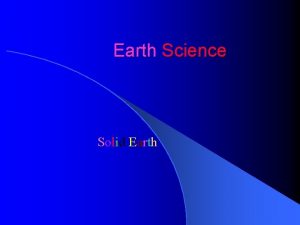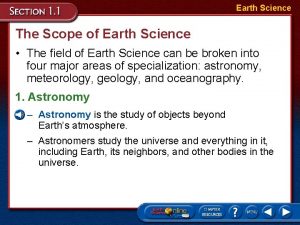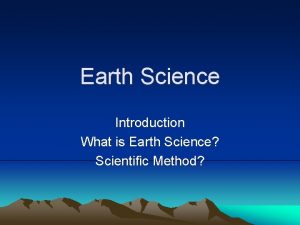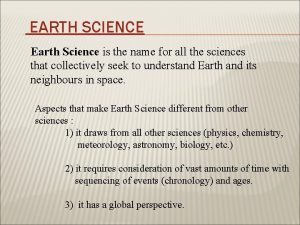Weather Earth Science What is Weather Definition Weather




























- Slides: 28

Weather Earth Science

What is Weather?

Definition Weather: The state or condition of the atmosphere at any given location for a short period of time

What is the Major Cause of Weather Constant changes in the atmosphere due to variations in insolation which causes heat energy to be unevenly distributed

Atmospheric Characteristics Layers of the atmosphere: (ESRT p. 14) Thermosphere Mesosphere Stratosphere Troposphere



Weather Variables Temperature: The average kinetic energy of molecules A) Thermometer: Liquid in a closed tube. Liquid expands when heated B) Thermograph: Records temperature over a weeks time in a graph

Weather Variables Air Pressure: Pressure due to the weight of the overlying atmosphere pushing down on any given area

Air Pressure Barometer: Instrument used to measure air pressure. Measured in: • • Inches (in) Millibars (mb) Barograph: Records air pressure over a weeks time

What Makes Air “Heavy” or “Light”? Troposphere Composition: (ESRT p 1) • 78% N 2 Atomic Mass: 14 x 2 = 28 • 21% O 2 Atomic Mass: 16 x 2 = 32 • 1% Other

Moist vs. Dry Air < 1% Water H 20 Atomic Mass: Hydrogen = 1 x 2 = 2 Oxygen = 16 So H 20 = 18 Dry air is much heavier than moist air!!! As water vapor (gas) is added to a unit of air, you are adding a lighter gas and a heavier N 2 and O 2 are pushed out.

Weather Variables Wind: The horizontal movement of air parallel to the Earth’s surface caused by differences in air pressure.

Winds are named for the direction from which it comes. Wind Vane - direction Anemometer – speed

Weather Variables Moisture Two Major Sources: 1) Evaporation from the oceans 2) Transpiration from trees (plants)

Humidity Definition: The general term for water vapor content in the atmosphere • Absolute Humidity – The actual amount of water vapor in a volume of air • Relative Humidity – The ratio of the absolute humidity to the maximum amount the air can hold

Water Vapor Capacity Warm Air = High water vapor capacity Cold Air = Low water vapor capacity

How do we Measure Relative Humidity? Psychrometer: Measures humidity with two thermometers • 1 dry bulb • 1 wet bulb

Determining Relative Humidity Evaporation is a cooling process!!!! The amount of cooling depends on the rate of evaporation.

Therefore: • The greater the difference between the dry bulb and the wet bulb, the drier the air • The smaller the difference between the dry and wet bulbs, the more humid the air.

Dew Point Definition: The temperature at which the air is saturated with water vapor. Saturated: A parcel of air is holding all the water vapor it can at a particular temperature. RH = 100% The closer the wet bulb and dry bulb, the more saturated the air

Clouds Requirements: • Water Vapor • Temperature cools to dew point • Condensation Nuclei (Dust)

Cloud Forming Process 1) Air Rises 2) Expands 3) Cools 4) Dew Point is Reached 5) Water Vapor Condenses on Condensation Nuclei

Three Basic Types 1)Cirrus – High, thin wispy clouds of cold air ice crystals 2)Stratus – Low, layered, thick clouds 3)Cumulus – Vertically developing clouds, puffy – fair weather


Fog Definition: A cloud on or just above Earth’s surface (stratus).

Precipitation Definition: Liquid, or solid water falling from clouds. Instruments: • Rain Gauge • Ruler

Forms of Precipitation Forms: – – – Rain Freezing Rain Sleet Hail Snow
 What is her favourite subject
What is her favourite subject Hydrosphere
Hydrosphere Geology earth science definition
Geology earth science definition Geology earth science definition
Geology earth science definition Mercury barometer
Mercury barometer Earthology definition
Earthology definition Properties of minerals
Properties of minerals High gradient streams
High gradient streams Big question map
Big question map Meteorological symbols for four types of fronts
Meteorological symbols for four types of fronts Earth science sol 2010
Earth science sol 2010 Lab practical review earth science
Lab practical review earth science Earth science regents part d
Earth science regents part d Earth science regents lab practical
Earth science regents lab practical Earth science grade 9
Earth science grade 9 Dynamic equilibrium earth science
Dynamic equilibrium earth science 4th grade science jeopardy
4th grade science jeopardy Environmental science a final exam
Environmental science a final exam Earth science meaning
Earth science meaning Earth science sol review
Earth science sol review Earth science vs geology
Earth science vs geology Earth science final
Earth science final Earth science lab practical
Earth science lab practical Earth science semester 2 final exam answers
Earth science semester 2 final exam answers Earth science reference table dew point
Earth science reference table dew point 4 branches of earth science
4 branches of earth science 282 ways to pass the earth science regents
282 ways to pass the earth science regents Earth science branches
Earth science branches Honors earth science
Honors earth science

